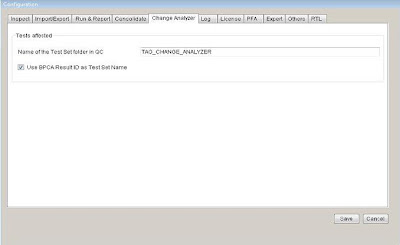The highly secure and
mission-critical nature of enterprise resource planning (ERP) data requires
many SAP customers to test their ERP applications and business processes
regularly. Many SAP customers use expensive customized manual procedures to
test processes and applications. Manual testing is time-consuming, and
frequently requires a team of experienced quality assurance (QA) professionals.
Subject matter experts also often need to spend a lot of time communicating the
process data flow to testers.
SAP Test Acceleration and Optimization
streamlines the creation and maintenance of ERP business process testing.
SAP Test Acceleration and Optimization helps
QA specialists to break down a test into components which are:
- Assembled into test cases in a simple interface, using drag and drop
- Parameterized for flexible reuse, such as reusing a test that has updated data
- Maintained easily and inexpensively, even when screens, flows, or service packs change
SAP Test Acceleration and
Optimization is designed for SAP-GUI-based applications. SAP Test Acceleration
and Optimization users should be experienced quality managers who are familiar
with the SAP Quality Center application by HP, SAP GUI ERP applications, and
business process testing.
Automatic
testing with SAP Test Acceleration and Optimization maximizes:
Testing
deployment:
SAP Test Acceleration and
Optimization, with SAP Quality Center, dramatically reduces the amount of time
required to build and execute test scripts.
Reuse:
SAP Test Acceleration and
Optimization eliminates the need to create new tests whenever a component
changes. If one component in a group of tests changes, replace that component,
and re-consolidate the tests.
Maintenance:
SAP Test Acceleration and
Optimization records component parameters. It provides a Microsoft Excel spreadsheet
to save parameters for reuse and maintenance. SAP Test Acceleration and
Optimization helps you to determine the need for repairs, and helps you to
repair your components.
Robustness:
The
SAP Test Acceleration and Optimization inspection process ensures that SAP Test
Acceleration and Optimization tests are more robust during changes. Inspection
examines the parameter in a component, not just the screen object behavior.
The
SAP Test Acceleration and Optimization solution requires products from SAP and
HP QTP,QC















